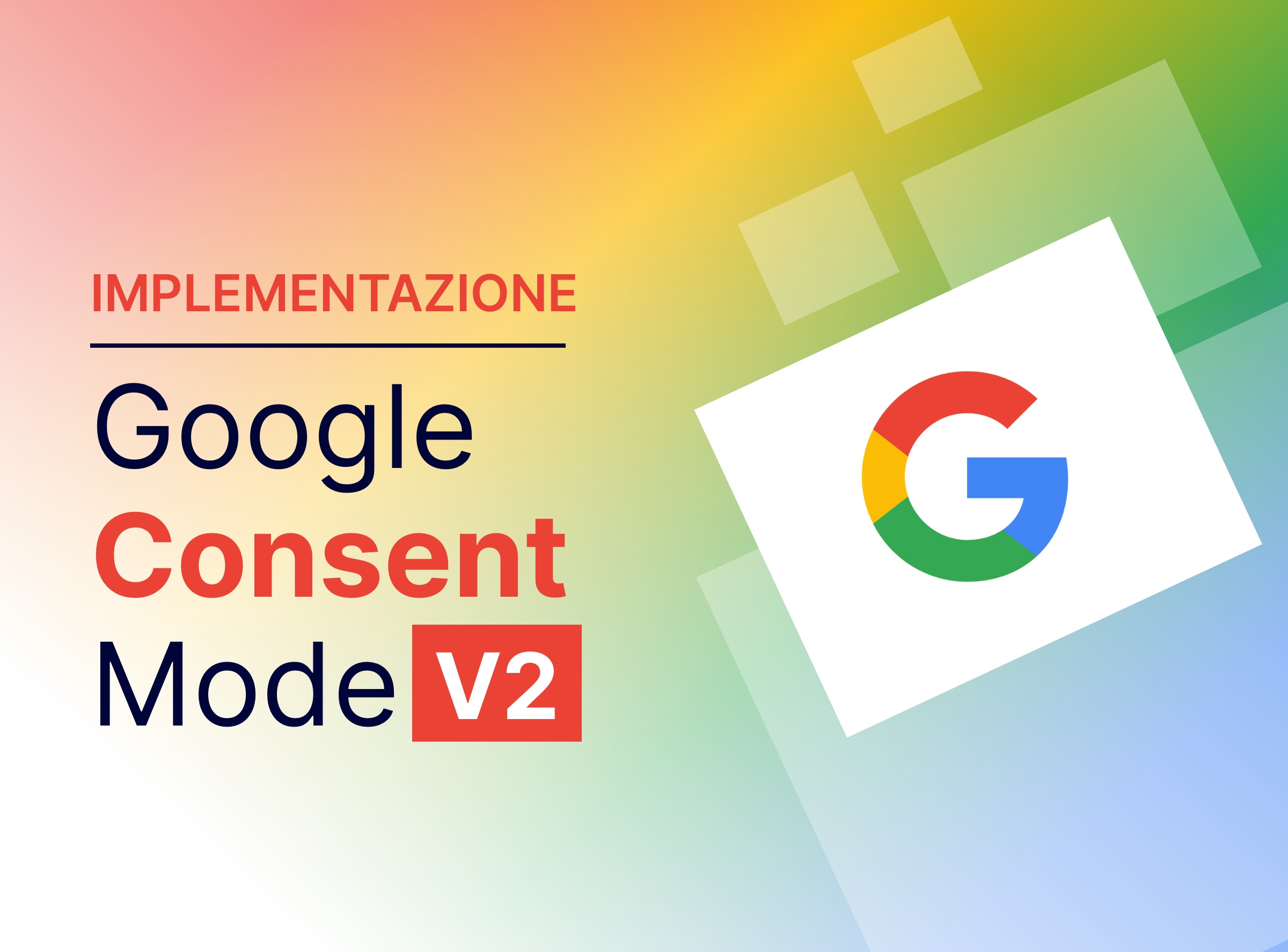
Google Consent Mode V2: how to implement it and why it is crucial
After discussing what the Google Consent Mode V2 tool is and its differences from previous versions, we will now focus on the practical implementation of this new functionality, which is essential for continuing to track Google Ads conversions and visits on Google Analytics even for users who do not consent to tracking, while still respecting privacy and regulatory compliance.
We will explore the various options available and the impact that a proper implementation can have on the performance of advertising campaigns on Google Ads.
Keep reading to delve deeper into the topic and discover the best practices for a successful digital strategy!
What are the implementation methods?
To implement Google Consent Mode V2, there are three main methods:
- Use of Consent Management Platforms (CMP) such as Cookiebot or Iubenda: involves the use of a cookie banner through a certified consent management platform, which manages users' consent for the utilization of their personal data;
- Google Tag Manager: involves using Google Tag Manager to directly manage it within your website. This method offers developers greater flexibility and control in integrating the consent mode;
- Use of Google Tag/SDK: this approach requires developers to manually create code for implementing Google Consent Mode within the website. Although more labor-intensive, it provides a high degree of customization and control over the integration process.
Choosing the most appropriate implementation method depends on the specific needs of your website and the resources available. In any case, it is crucial to make sure that you comply with the new regulations and ensure proper management of user consent to avoid possible penalties and protect their privacy.
Why is it important to adopt Google Consent Mode V2?
The adoption of Google Consent Mode V2 is crucial for several reasons.
Firstly, its implementation allows online platforms to remain compliant with privacy regulations and data protection laws. This is particularly important in an increasingly stringent regulatory environment, where privacy breaches can lead to significant penalties for companies.
Secondly, it provides an effective way to manage user consent regarding the use of their personal data for advertising purposes. This means that website owners can maintain transparency and user trust while still leveraging the opportunities offered by online advertising.
Lastly, it allows for the collection of a greater amount of data and maintains high performance for Google Ads campaigns. This not only optimizes advertising strategies but also improves the overall online user experience by enabling them to express their preferences regarding advertising and personal data management. It creates a more personalized and privacy-respecting environment for website visitors.
Rely on our web agency to effectively implement Google Consent Mode V2 on your online platforms. We will help you maximize the effectiveness of your Google Ads advertising campaigns while ensuring compliance with privacy regulations.
Contact us for personalized consultation. We're ready to assist you!


